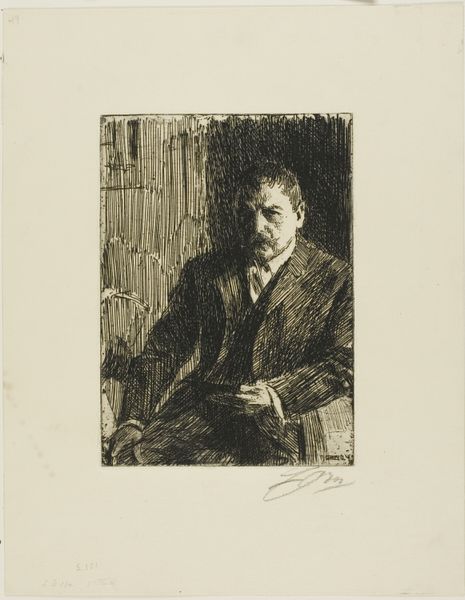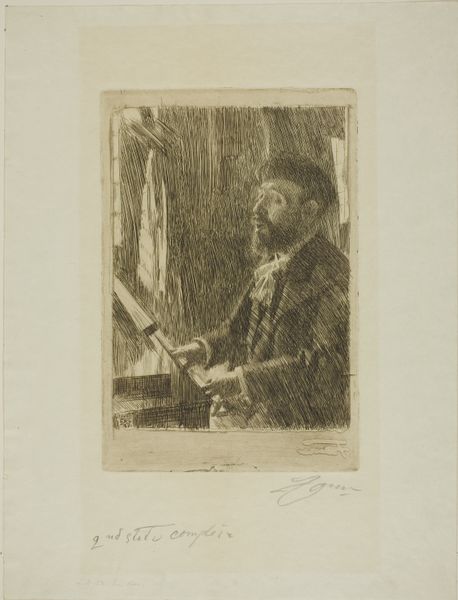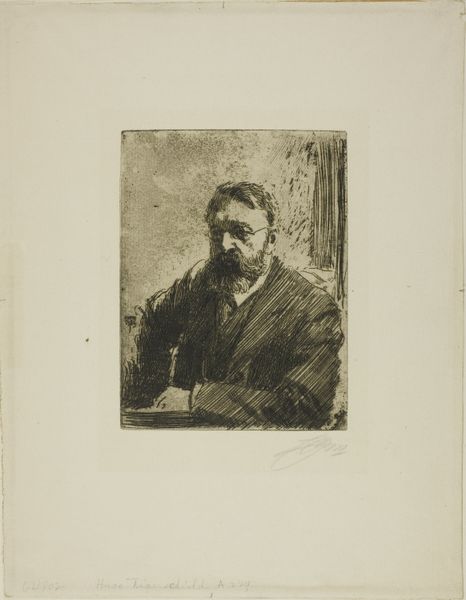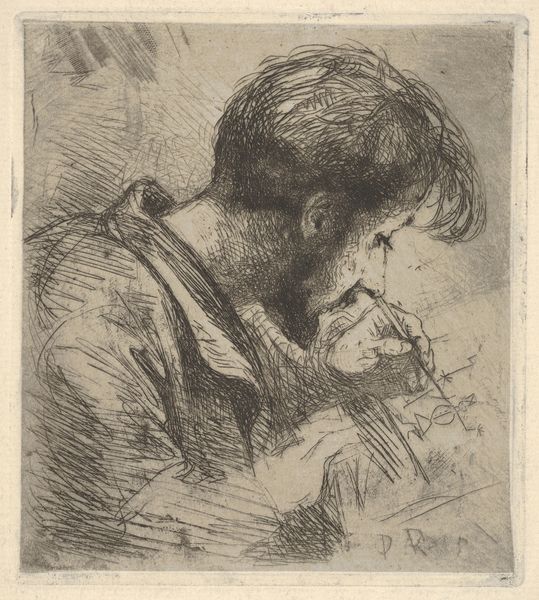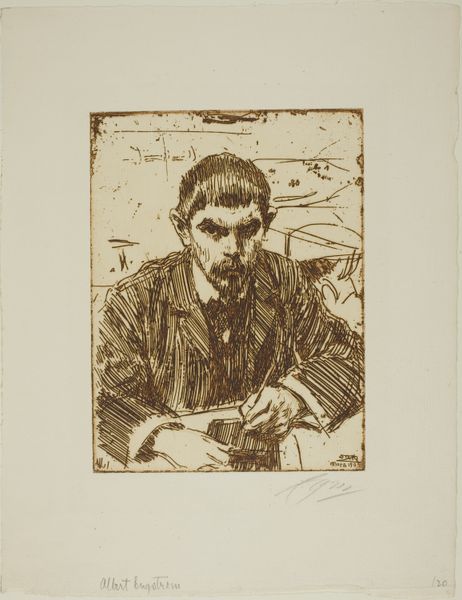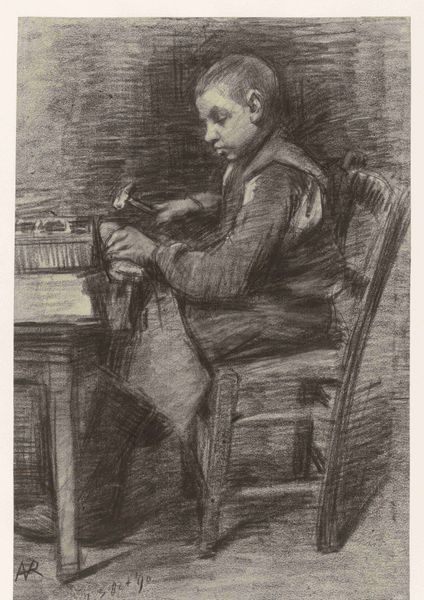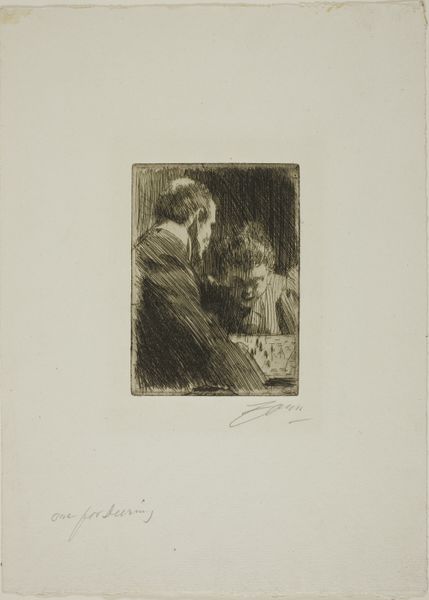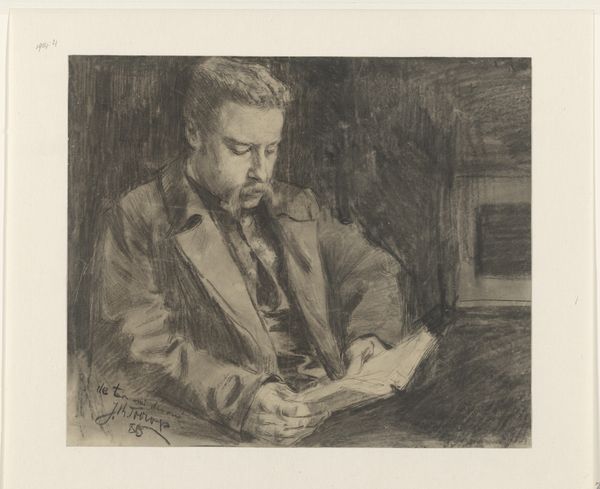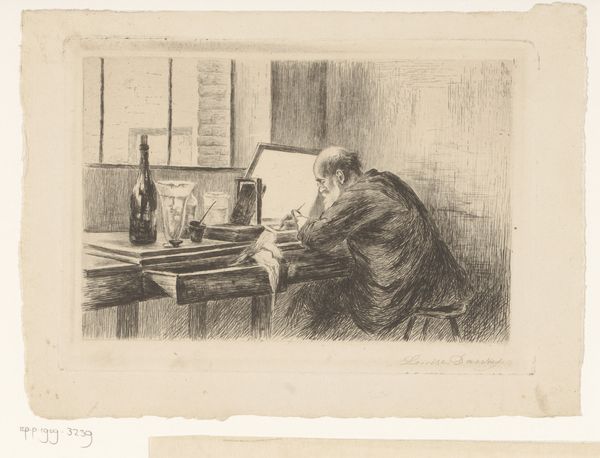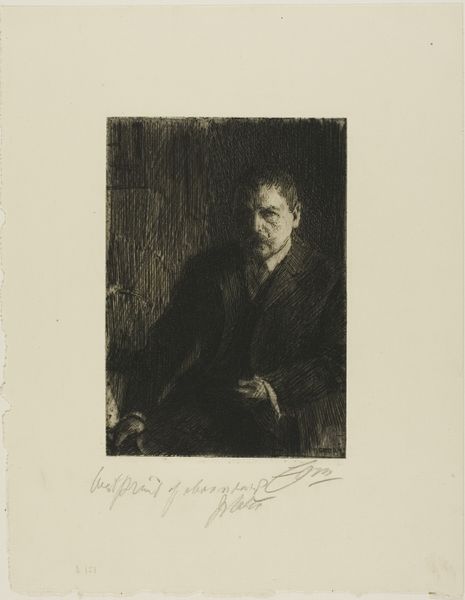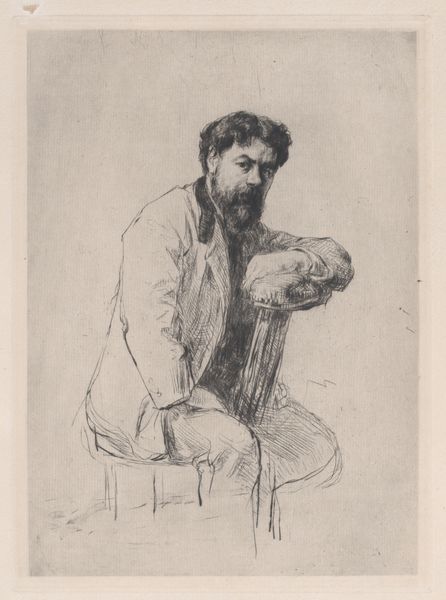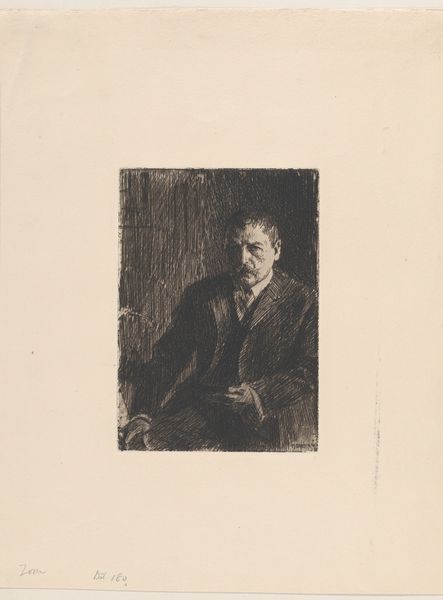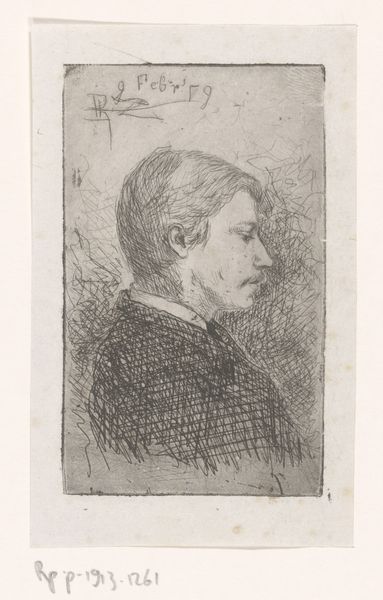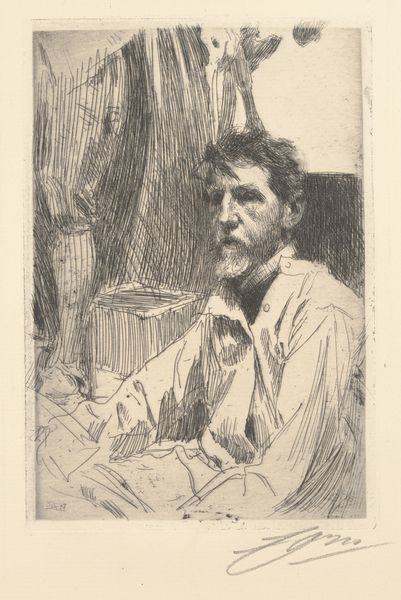
drawing, print, etching, paper, pencil
#
portrait
#
drawing
# print
#
etching
#
paper
#
pencil drawing
#
pencil
Dimensions: 134 × 96 mm (image); 140 × 102 mm (plate); 239 × 171 mm (sheet)
Copyright: Public Domain
Editor: Here we have Anders Zorn's 1891 etching, "H. R. H. Prince Eugen of Sweden," currently residing at The Art Institute of Chicago. It’s a small, intimate portrait, almost like a quick sketch. I'm struck by the contrast between the detailed rendering of the Prince and the more abstract background. What aspects of the composition do you find most compelling? Curator: Indeed. Notice the economy of line. Zorn masterfully uses hatching and cross-hatching to define form and create tonal variation. The texture, achieved through the etching process on paper, isn't merely representational but becomes an active element within the overall design. Consider the angle of the Prince's gaze and its relation to the implied lines created by his body. How do these compositional elements direct our reading of the piece? Editor: They guide the eye from the strong lines of the coat upwards, but then it loses focus in the sketchiness around the head and in the background. I do wonder what to make of the figure seemingly etched on the wall in the background. Is it intentionally primitive, naive, or is it pure accident? Curator: That tension, as you perceptively note, is crucial. It complicates any singular reading. Is it an artwork that plays with representation and abstraction, or does that inclusion disrupt the very act of looking, thereby undermining traditional portraiture conventions? Editor: So it sounds like even the rough qualities were purposefully used to highlight a formal relationship between the foreground and background. I see it now. Thanks! Curator: Precisely! Considering how each element interacts in a system of formal relations allows us to appreciate the sophistication of the artist's visual language.
Comments
No comments
Be the first to comment and join the conversation on the ultimate creative platform.
